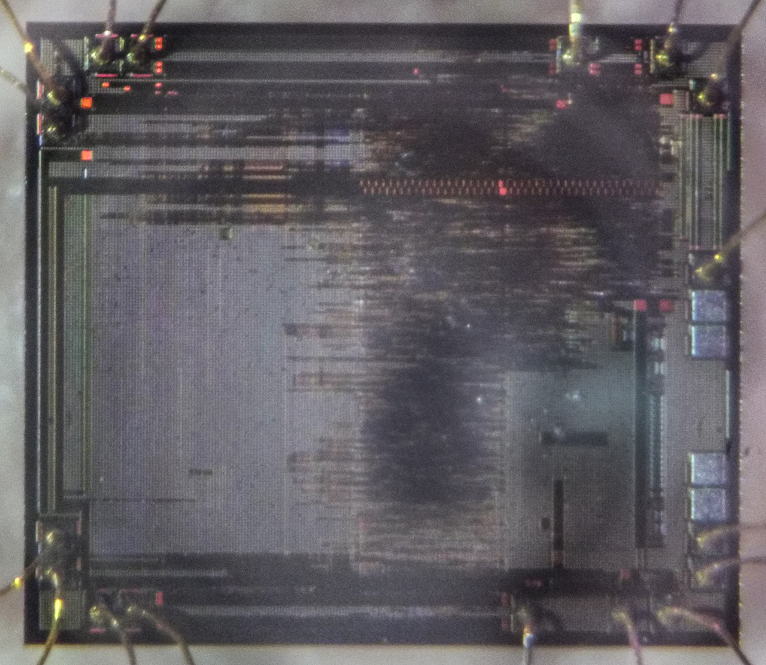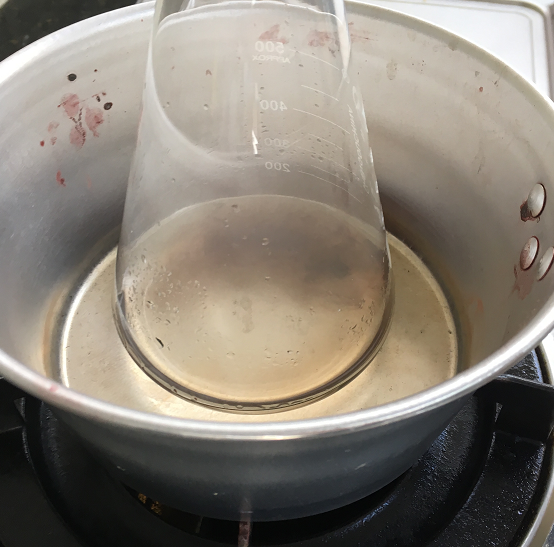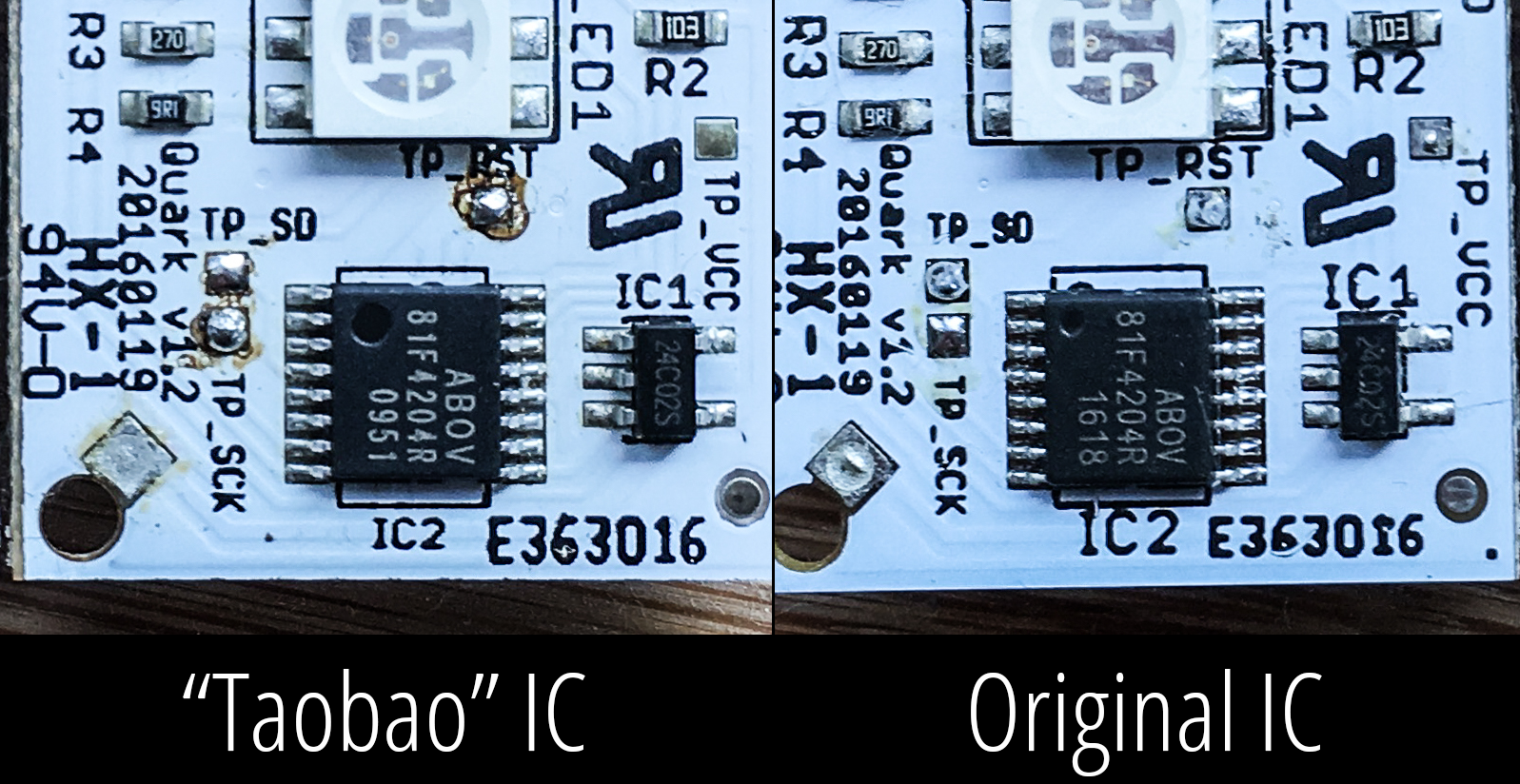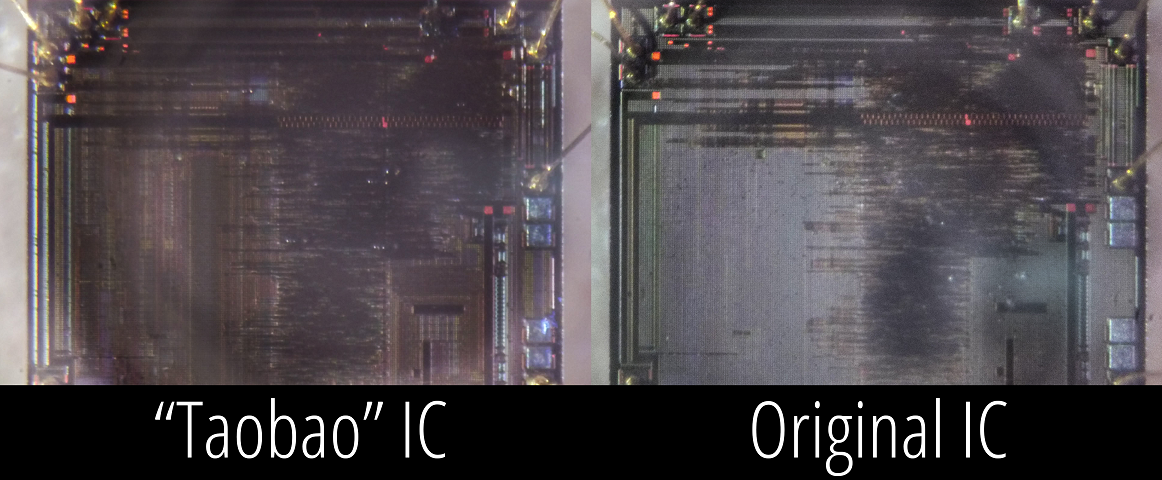Decapping ICs with Sulphuric Acid
Thu, Dec 7, 2017
There are only two hard parts about IC decapsulation: obtaining a usable acid and doing it safely.
Recently, I ordered some exotic integrated circuits which were only available in China via Taobao. Obtaining ICs from China is a hit-or-miss process, as the products may be new (ideal), used (still okay), “compatible” (barely usable), or fake (unusable).
Chip packaging and die markings are easily faked, hence decapsulation is a practical method to expose the IC’s die, and thus verify if the chip is usable by comparing it with a decapsulated original die.
Safety Considerations
Along with the usual “acids are dangerous” rhetoric..
- Notify someone before you work, and ensure the area is clear of people / pets
- Read and understand the MSDS
- H₂SO₄ reacts violently with water
- Always add acid to water. Never add water to acid
- Hot H₂SO₄ is especially dangerous in terms of reactivity (and thus safety). Allow the acid to cool before handling or neutralizing
- Heating H₂SO₄ produces dangerous fumes and should be ideally be done in a fume hood, or a well-ventilated area
Requirements

Sulphuric Acid Drain Cleaner
There are many drain cleaners of different active ingredients. Get the one with highest concentration of H₂SO₄, and without inhibitors if possible.
Protective equipment
Nitrile gloves and eye protection are required. An acid-resistant coat is nice to have.
Heat-resistant glass container
Anything that can be heated safely, and is resistant to hot H₂SO₄ should work. I bought a borosilicate Erlenmeyer flask from China for about US$8 shipped, though there’s a good chance that the “borosilicate” is actually soda lime.
Metal container
Used to hold the glass container during heating
Sodium Bicarbonate (baking soda)
For cleaning purposes. Avoid neutralizing concentrated acid with sodium bicarbonate as the process may be violent.
Heat source
I used a gas stove, although a hotplate would be preferable.
IC to decap
The packaging should ideally have as little material as possible. For DIPs, it may be helpful to remove the leads.
Process

Drop the IC into the glass container, and fill with a thin layer of H₂SO₄. This amount varies with your IC package’s size, as well as your container’s width. I used a 500ml Erlenmeyer flask with a TSSOP16 IC, and found that 50ml was sufficient.

Place the glass container within the metal pot and heat gently, until the H₂SO₄ starts reacting with the package and forms a dark blotch near the IC. Reduce the heat further, as you only need to maintain this state.

Allow it to simmer for about 5 minutes, then turn off the heat and allow the setup to cool. When sufficiently cool, swirl the container gently to see if the die has been extracted successfully. Repeat the earlier process if the decapsulation was incomplete.

Gently decant the acid (only!) into a large pail of cool water to dilute the acid for disposal. Rinse the IC and the flask with water.
At this point, the decapsulation process is complete, and you may also want to transfer the die onto your preferred medium for further processing / imaging.
Comparison shots

The Taobao IC shows the classic signs of a counterfeit IC: the markings are of a slightly different font (especially the 4 in 81F4204R) and has a thicker font weight. The registration dot to indicate Pin 1 is also much fatter on the Taobao IC.

The die shots tell a different story - both dies appear to be visually identical, and I am fairly convinced that the Taobao IC is the real deal. In fact, after connecting an ISP, I was surprised to find out that the chip already had code running on it (someone else’s?).
While most of us are probably comfortable sticking to DigiKey/Mouser/etc for our usual orders, there may come a time where one might be required to source ICs of doubtful origin (EOL parts, overly successful hardware kickstarters?) and this process might hopefully come in handy then!
Singapore-specific notes
- 1L H₂SO₄ “Drain-Out” drain cleaner from Horme (S$13.91)
- Nitrile Gloves, Eye Protection, Aluminium pot from Daiso (S$6)
- Baking Soda (Sodium Bicarbonate) from ValueDollar (~S$2)
- List of A&Es in Singapore
Very useful wiki on IC reversing (and decapping): sipr0n